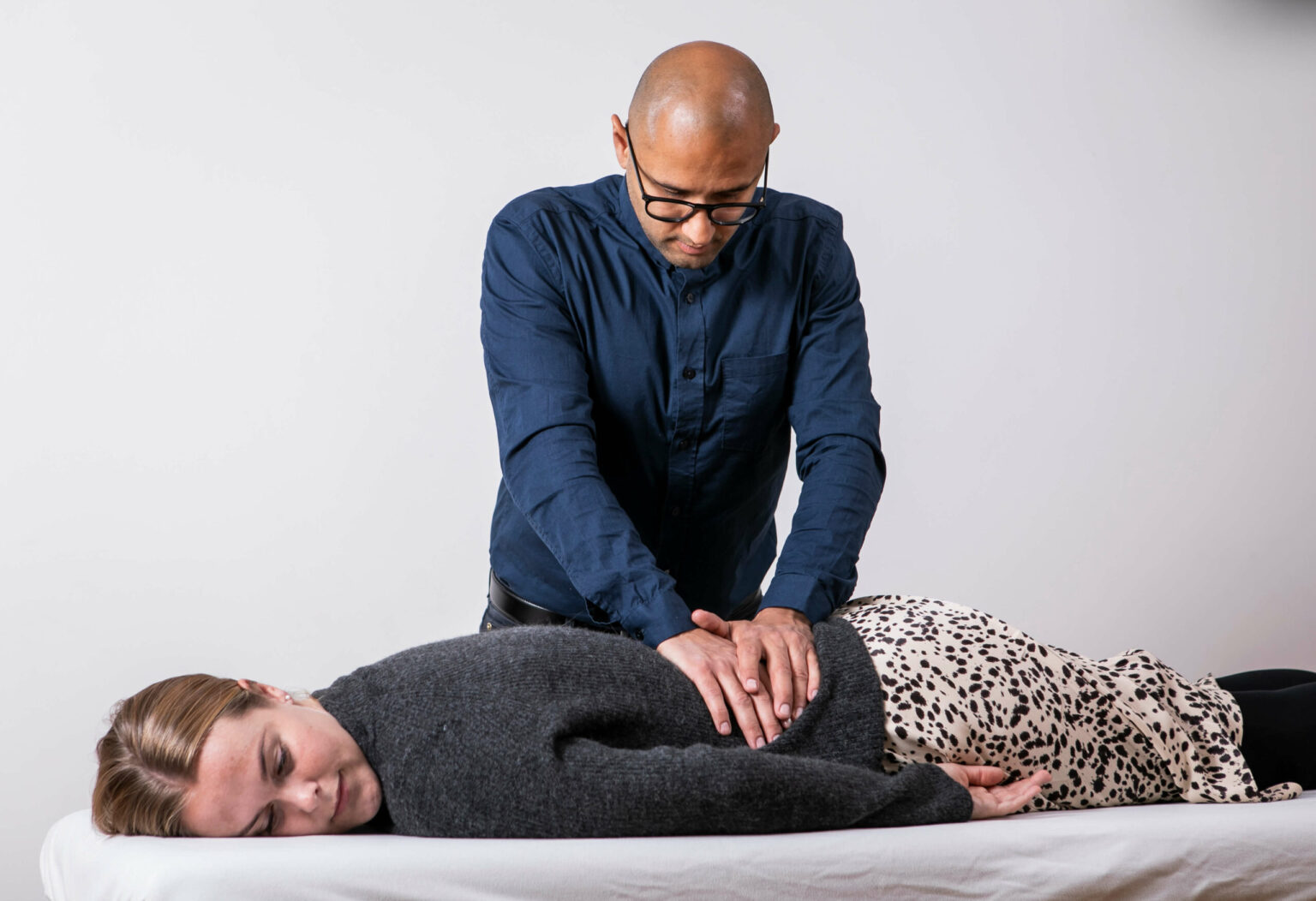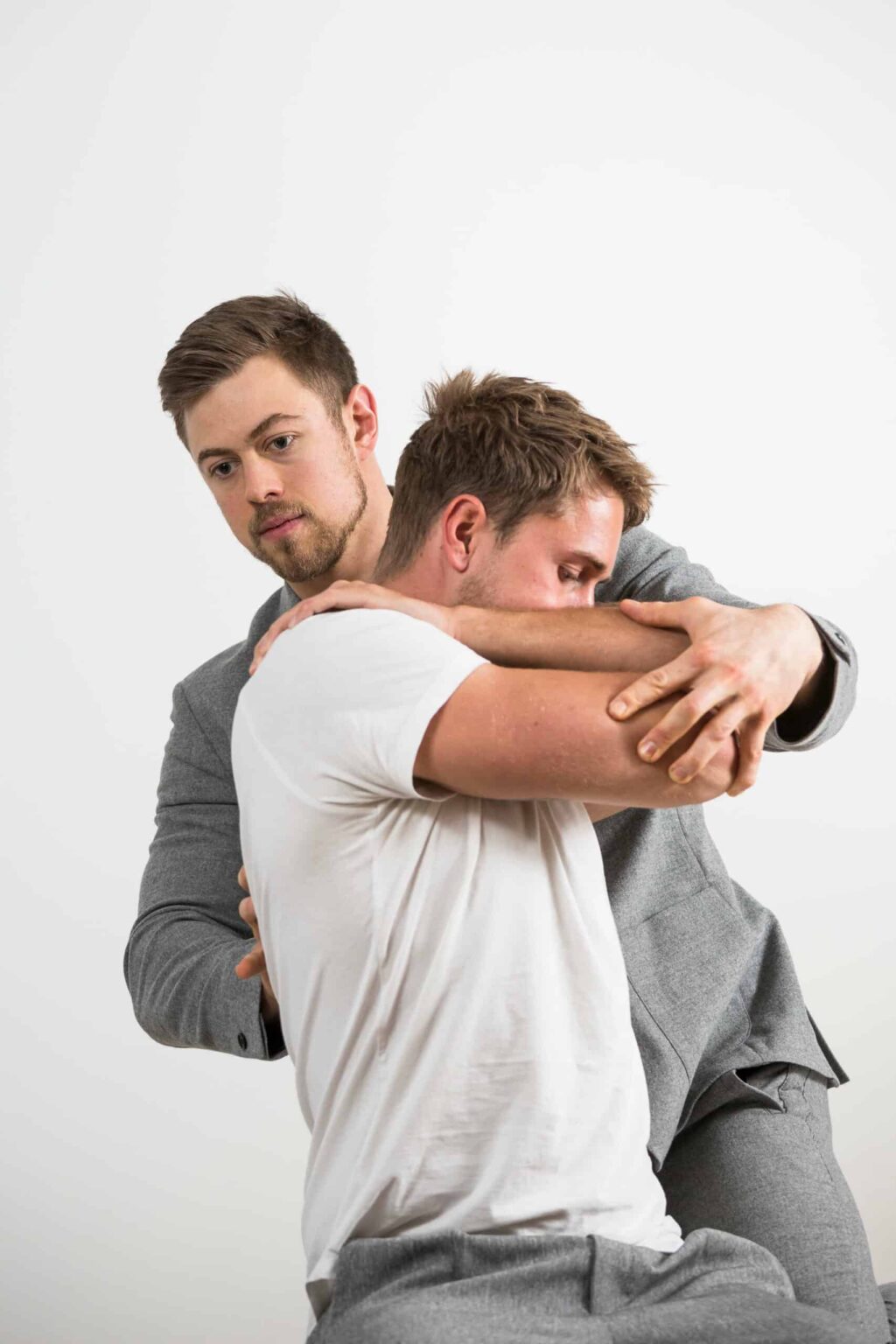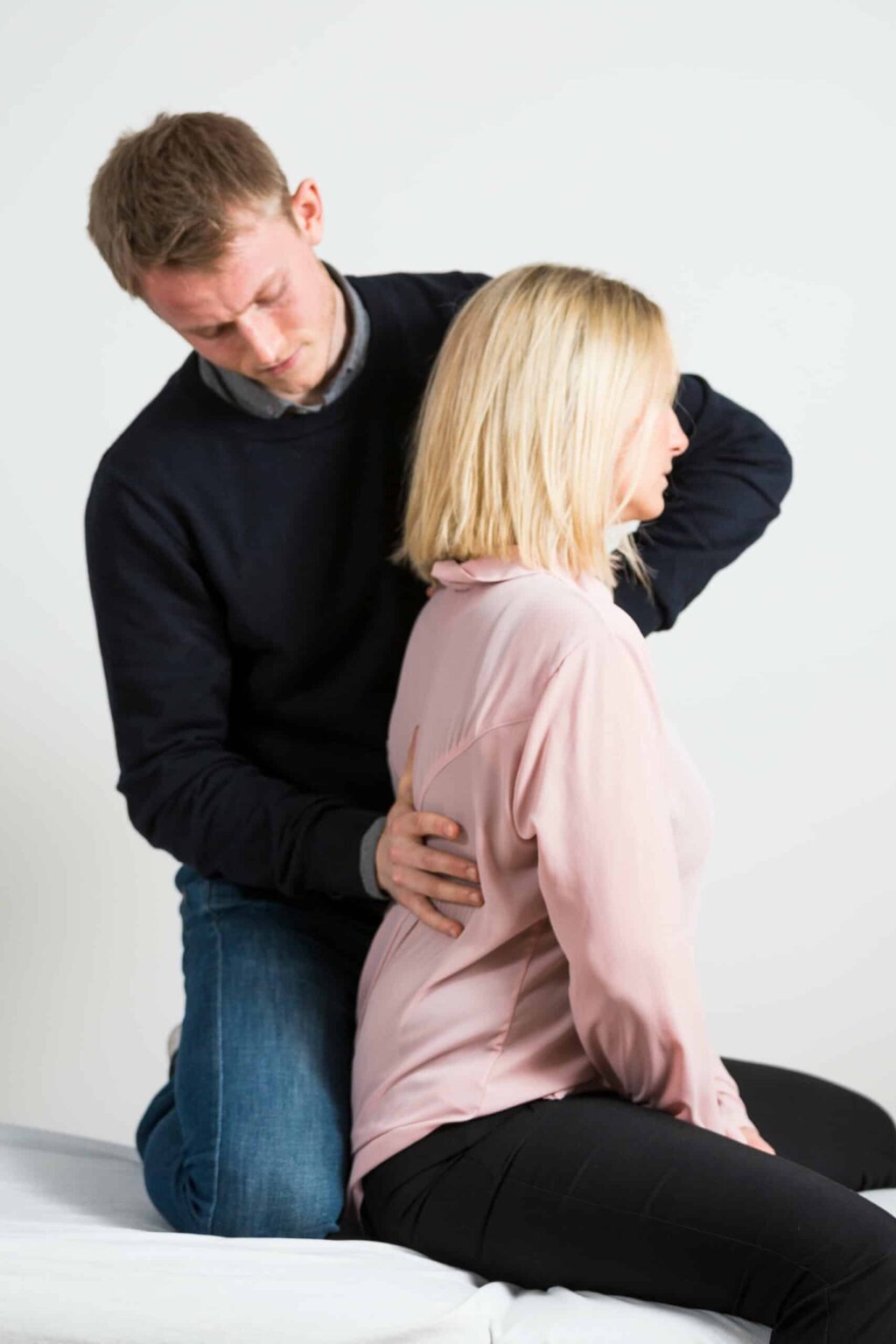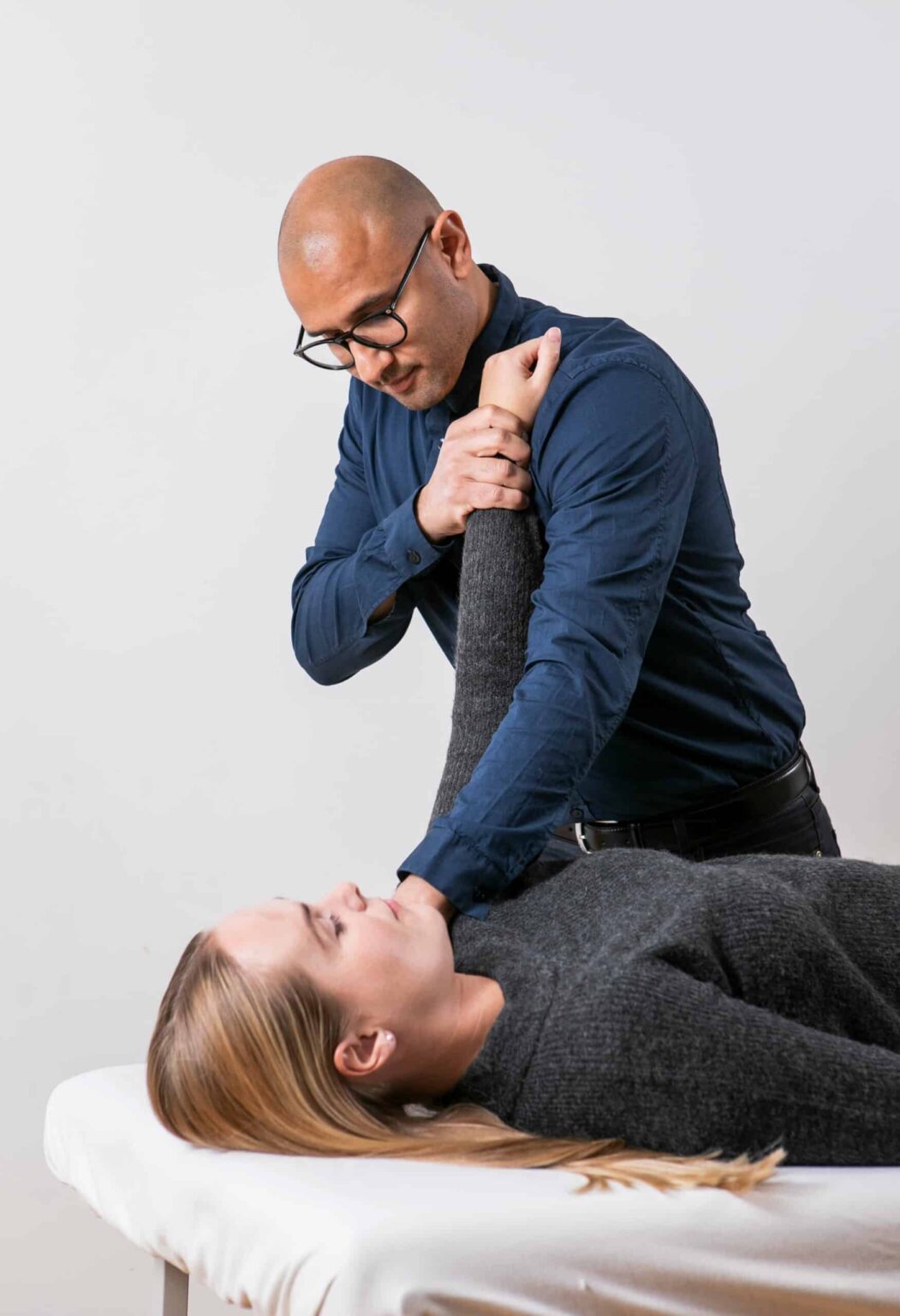We treat
Winged scapula
Learn more about winged scapula and how to fix them
What are winged scapula?
Winged scapula, also called scapula alata, are seen when the shoulder blade wings out from the body, which is also the reason for the characteristic name. The shoulder blade itself is a hinge that is stabilized and controlled by muscles, primarily m. Serratus anterior, which seeks to hold the shoulder blade in to the body and help the shoulder blade in the right direction when the arm is raised above the head. If m. Serratus anterior is unable to generate the necessary energy and force for this, or if your chest muscles are too tight, the shoulder blade will begin to wing, which is primarily seen when you raise your arm above head height.
Jump to section [Vis]
Causes of winged scapula
The cause of winged scapula may be an impact on a specific nerve – namely the nerve that affects the serratus anterior muscle. This nerve is called the n. Thoracicus longus or the long thoracic nerve.
Nerve impingement causes can vary greatly and can occur after physical trauma, such as a broken rib or collarbone, or during housework or gardening, such as washing a car or digging. It can also occur spontaneously – for example, after an inflammatory condition.
Symptoms and treatment of winged scapula
You will not always experience pain in connection with winged scapula. If it is a nerve injury, a sharp pain is most often described, whereas it is possible, if it is for muscular reasons, to experience moderate pain. However, most often, no specific pain is described, but rather an experience that the arm feels heavy.
You will experience problems lifting your arm above your head and fatigue in your arm. During the physical examination, the therapist will notice which muscles are affected in relation to how your shoulder blade “wings”. The therapist will also perform tests to give a more detailed indication.
Source: Sundhed.dk
Tests you can do yourself
There are two tests you can do yourself at home:
1. Stand with your arms at your sides in a relaxed position. Have someone take a picture of your back and then look at the picture to see what your shoulder blade looks like.
2. Take a video of yourself doing a push-up against a wall, lifting your arm above your head, or pulling something. Look again at how your shoulder blade looks.
If you can clearly see the inner edge of your shoulder blade, there is a high probability that you have scapula alata.
Exercises for winged scapula
With scapula alata, there is a good chance that you can train your symptoms away – this depends on whether the examination shows that there is, among other things, the possibility of activating the serratus anterior muscle. If this is the case, exercises will be started.
The exercises can be:
- Wall slides:
Stand facing the wall. Bend your elbows and place your forearms on the wall with your hands squared. The tips of your elbows are now facing downwards. Pull your shoulder blades together and move your arms up the wall in a controlled motion. Lower your arms back down and repeat.
- Isometric wall press:
Stand upright with your face facing away from the wall. Extend your arm back with your thumb facing forward. Press into the wall and hold for a few seconds, return to the starting position and repeat.
These exercises are just examples – the specific exercises that are right for you will be adjusted by your therapist depending on your level and the location of the injury.

Osteopathic treatment of winged scapula
It is currently recommended that the first treatment is conservative treatment (physiotherapy/osteopathy). If early treatment is not initiated, there is a chance of developing a number of other shoulder problems such as impingement, tight capsule/frozen shoulder, etc. In some cases, it may also be necessary to wear a so-called “brace”, which is a splint made by a orthotist that holds the shoulder blade in place against the body.
In osteopathic treatment, the first step is to take a thorough medical history and examination to determine the cause of your shoulder blade “winging”. There may be information in the medical history that can indicate which direction the osteopath will take, so it is a good idea for you as a patient to remember when the problem started and whether it occurred in connection with anything.
Based on the information from the initial interview and the examination itself, the osteopath will assess the cause and how it can be treated. You will then be recommended some specific exercises, and it will be agreed how you as a patient should behave going forward, as well as what your course will be.
Training program – example
Below is an example of what a training program for someone with scapula alata might look like in the beginning. The exercises can be done in 3 sets of 15 repetitions – remember to take a break of about half a minute to a minute and a half between your sets.
- Sitting rows
- Walls slides
- Isometric shoulder extension
- Stretching of the chest muscles

Often related injuries

Spinal stenosis

Hypermobility in babies and children

Muscle tension or imbalances in babies and children

Modic Changes

Disc herniation

Spinal arthritis

Shoulder dislocation

